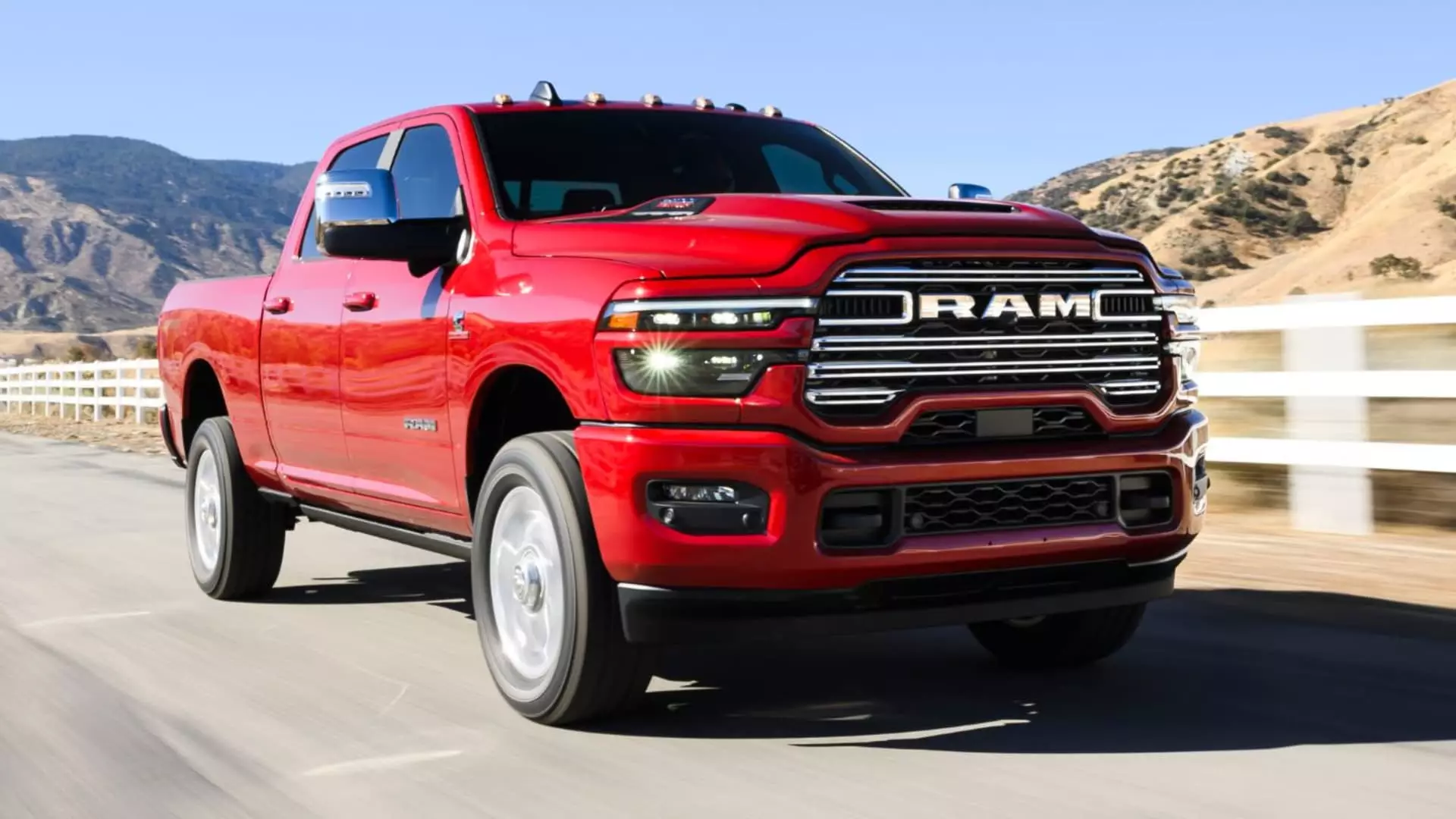Stellantis has taken a significant step in revamping its large Ram heavy-duty trucks, aiming to rejuvenate a brand that has faced notable sales declines over the past three years. The latest models, namely the Ram 2500 and 3500, as well as the chassis cab versions, showcase a comprehensive redesign both inside and out. Key to this overhaul is the introduction of an impressive 6.7-liter Cummins turbo diesel engine, offering an extraordinary 430 horsepower and a best-in-class torque of 1,075 foot-pounds. This push for better performance reflects a broader trend in the heavy-duty truck market, where capability and utility are paramount.
Despite the promising updates, Stellantis faces a tough road ahead. Each of the new trucks is set to hit the U.S. market with a price increase of approximately $2,300, starting at $47,560. This pricing strategy, while reflective of the quality enhancements, could alienate price-sensitive consumers, especially given the current economic uncertainties. The Ram brand has seen a dramatic 19% year-over-year sales decline in 2024, with a troubling 16% drop specifically within its pickup segment. In contrast, competitors such as Ford and GM have maintained stable sales figures, indicating that Ram has not just struggled, but has faced fierce competition in a crucial market segment.
Ram’s CEO, Tim Kuniskis, openly acknowledged the setbacks with the rollout of the Ram 1500, which was delayed significantly. He expressed the urgency of this situation at a recent media event, asserting, “We should have been fully launched on that [1500] truck this summer. We should have had [the heavy-duty trucks] already.” This kind of candid admission indicates both a recognition of the brand’s challenges and a commitment to rectifying them. However, the delays raise questions about production efficiency and strategic planning within Stellantis that need addressing if they hope to regain market share.
One of the central features that set heavy-duty trucks apart in the market is their engine performance, and Stellantis is trying to leverage this through its dual-engine offering. The diesel engine option, which is especially valuable to work-oriented customers seeking robust towing and hauling capabilities, may attract a loyal base back to the Ram brand. In addition to the turbo diesel, the 6.4-liter Hemi V-8 engine provides an alternative for performance enthusiasts, generating 405 horsepower and 429 foot-pounds of torque. This diverse engine lineup aims to meet the needs of a broader demographic, catering to both commercial operators and recreational users alike.
As the revamped heavy-duty trucks prepare for their debut in dealerships across the U.S. in the first quarter of the year, the eyes of the automotive industry are fixed on Stellantis. This strategic revamp is a critical juncture for the Ram brand, and only time will tell whether these enhancements will be sufficient to turn around its fortunes. With the pressure mounting from competitors and the need to recapture market confidence, the performance of these trucks could determine not only the short-term results but also the long-term perception of the Ram name within the heavy-duty segment. In this volatile market, the stakes have never been higher.

